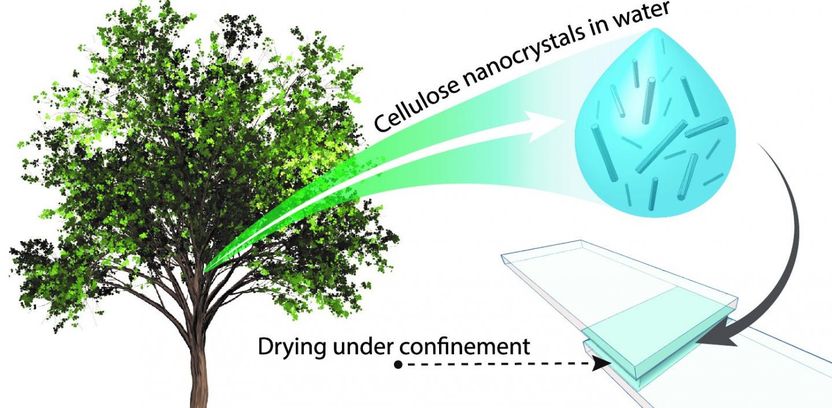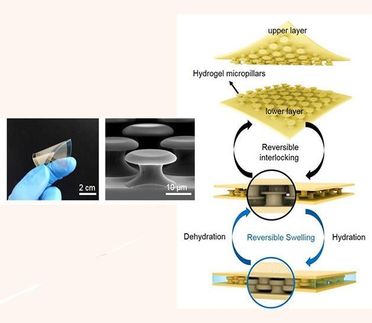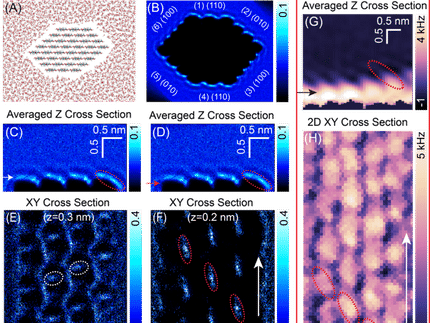The combination of plant-based particles and water forms an 'eco' super-glue
In a study published in Advanced Materials, researchers at Aalto University, the University of Tokyo, Sichuan University, and the University of British Columbia have demonstrated that plant-derived cellulose nanocrystals (CNCs) can form an adhesive that fully integrates the concepts of sustainability, performance, and cost which are generally extremely challenging to achieve simultaneously.

Basic demonstration graphic
Aalto University
Unlike Superglue, the new eco glue develops its full strength in a preferred direction, similar to "Peel and Stick" adhesives. When trying to separate the glued components along the principal plane of the bond, the strength is more than 70 times higher when compared to the direction perpendicular to that plane. All of this means that just a single drop of the "eco" glue has enough strength to hold up to 90kg weight, but can still be easily removed by the touch of a finger, as needed. As Dr Blaise Tardy from the Aalto Department of Bioproducts and Biosystems puts it, 'The ability to hold this amount of weight with just a few drops is huge, especially from a natural plant-based solution'.
These kind of properties are useful in protecting fragile components in machines that can undergo sudden physical shock such as high-value components in microelectronics, to increase the reusability of valuable structural and decorative elements, in new solutions for packaging applications, and - in general - for the development of greener adhesive solutions.
Producing a comparable product to a market leader at low cost and with new properties
Furthermore, compared to the current approach of making high-strength glues that can involve complex and expensive routes, the team has demonstrated that their solution is just taking biobased particles sources from plants (with a comparatively negligible cost) and just adding water. Since curing time is associated with evaporation of the water phase (~2 hours, currently), it can be controlled, for instance, with heat.
Aalto Professor Orlando Rojas says, 'Reaching a deep understanding on how the cellulose nanoparticles, mixed with water, to form such an outstanding adhesive is a result of the work between myself, Dr Tardy, Luiz Greca, Professor Hirotaka Ejima, Dr Joseph J. Richardson and Professor Junling Guo and it highlights the fantastic collaboration and integration of knowledge towards the development of an extremely appealing, low-cost and safe application'.
'Good, green packaging with bad glue still renders the packaging bad' - Dr Blaise Tardy
Moreover, the prospects for worldwide utilisation (in a 40B€ industry) is quite attractive given the ever-increasing production of cellulose nanocrystals seen across the globe, as supported by incentives in the framework of the circular bioeconomy.
Dr Tardy adds, 'The truly exciting aspect of this is that although our new adhesive can be sourced directly from residual biomass, such as that from the agro-industry or recycled paper; it outperforms currently available commercial synthetic products by a great many measures'.
Original publication
Other news from the department science

Get the chemical industry in your inbox
By submitting this form you agree that LUMITOS AG will send you the newsletter(s) selected above by email. Your data will not be passed on to third parties. Your data will be stored and processed in accordance with our data protection regulations. LUMITOS may contact you by email for the purpose of advertising or market and opinion surveys. You can revoke your consent at any time without giving reasons to LUMITOS AG, Ernst-Augustin-Str. 2, 12489 Berlin, Germany or by e-mail at revoke@lumitos.com with effect for the future. In addition, each email contains a link to unsubscribe from the corresponding newsletter.



























































